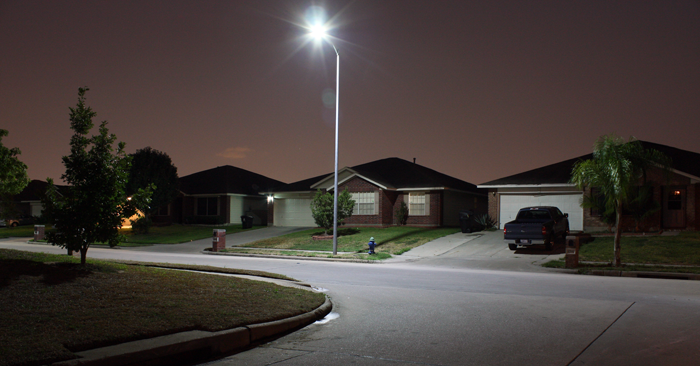
Lessons from the retrofit revolution

A recent news article draws attention to a new street lighting project just completed in downtown Philadelphia, Pennsylvania. This retrofit included replacing hundreds of high-pressure sodium lights with new, more energy-efficient, white LEDs. Philadelphia officials had good intentions in deploying the new lights. The story quotes the city’s Streets Commissioner David Perry, who said, “We wanted to lighten up Center City, make it feel safer.” However, the article notes, “Whether it is effective in making streets safer for pedestrians and bikers remains to be seen.”
There are many similar stories like this from across the globe as LED technology brings new opportunities and challenges in how we light our cities. Unfortunately, municipalities enticed by substantial cost savings continue to rush into LED conversions without doing their homework. Often, this leads cities to accept various myths regarding LED street lighting, including claims that LEDs reduce light pollution while increasing safety and decreasing crime.
Read 5 popular myths of LED lighting
Understandably, policymakers are under ever-increasing pressure to save energy, reduce costs and lower taxes, all while continuing to make their cities safer and more attractive. Although joining the LED streetlight revolution seems like a great solution, this seemingly good short-term answer often comes with misinformation, creating potential longterm negative effects on the environment and human health.
What can be done?
Like it or not, LED technology now leads the lighting industry and dominates streetlight sales. And it will continue to do so for the next decade or more. If your city has yet to converted to LED streetlights, it most certainly will in the next five years. Is there a way to make this lighting more environmentally friendly and decrease the known and suspected negative effects? The answer, fortunately, is most definitely yes.
DarkSky recommends several approaches in choosing and installing LED lighting that enhances public safety, reduces light pollution and creates a healthier environment for urban wildlife. They include:
1. Limiting the color temperature of LED lighting to no more than 3000 Kelvins
2. Fully shielding all new fixtures and ensuring they’re installed correctly, so the light is on the ground where it is needed
3. Installing dimmers, timers and other adaptive controls that limit the intensity of the lighting and the number of hours it’s on
If your city has already retrofitted its lights, unfortunately, there’s not a lot that can be done (learn how citizens in Davis, California got the city to change its mind about new street lighting). Here are a couple of potential solutions:
- Retrofit the lights with shields to direct light downwards and reduce glare
- Install after-market dimmers and/or timers to lower the intensity of the light at appropriate hours
- Add filtering materials to screen out harmful blue light emissions
Take action!
If your city hasn’t retrofitted its lights yet, now is the time to act!
- Ask questions and do your research! DarkSky has many resources for city residents, including:
Printable LED Information Handout (PDF)
Seeing Blue (PDF) - Write or call your Mayor and City Council Members. Speak to their staffers and let them know your concerns about the quality and effects of new energy-efficient street lighting systems.
- Contact your city Transportation or Streets Department and ask for details about any proposed or anticipated changes to city street lighting.
- Work to get a lighting ordinance enacted in your city, if none currently exists.
Remember, change is still possible! If you feel strongly about your nighttime environment, make sure your voice is heard. If you don’t act, things won’t change. Together we can work to make our cities healthier, safer places to live by insisting on quality lighting and not just short-term cost savings.

















